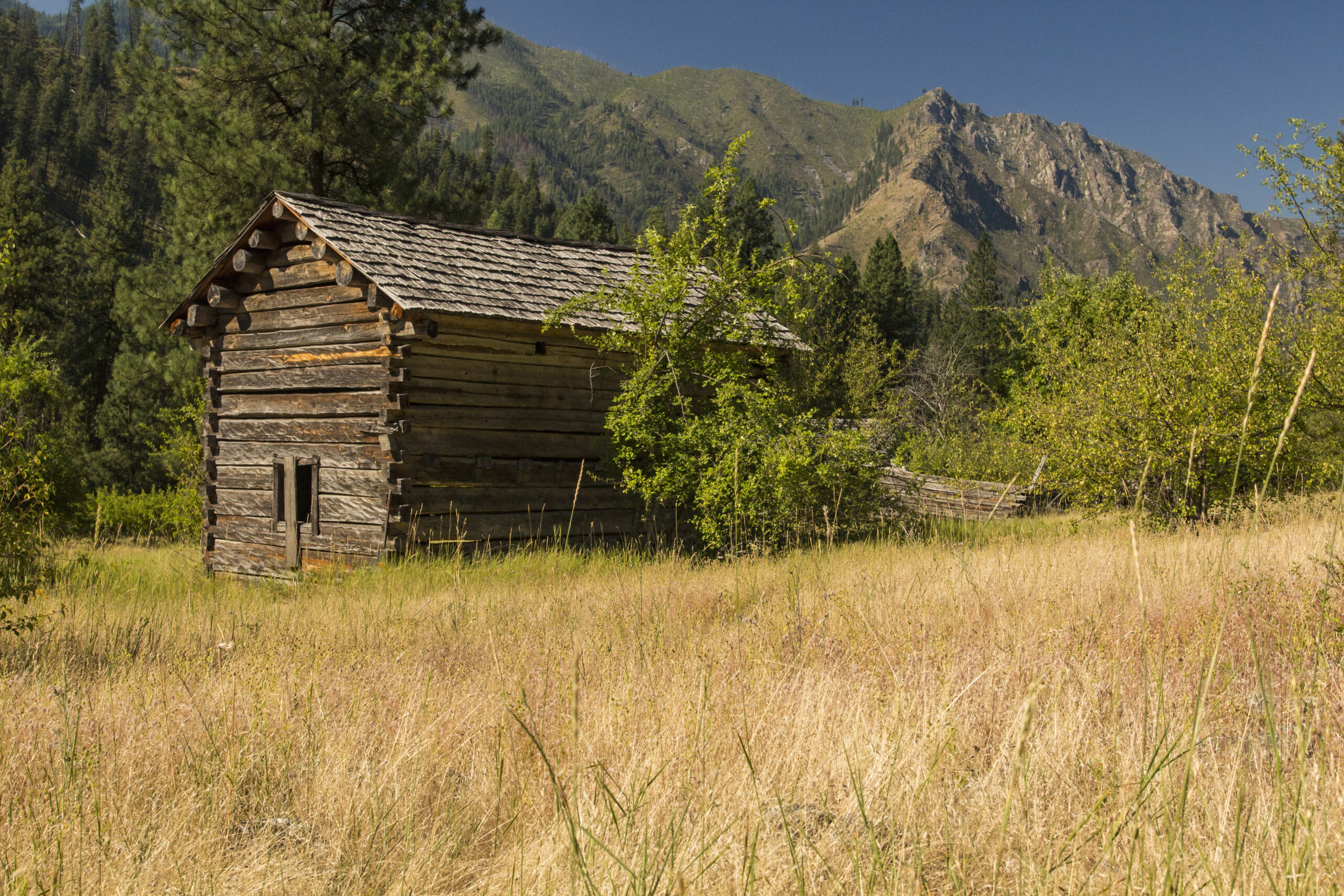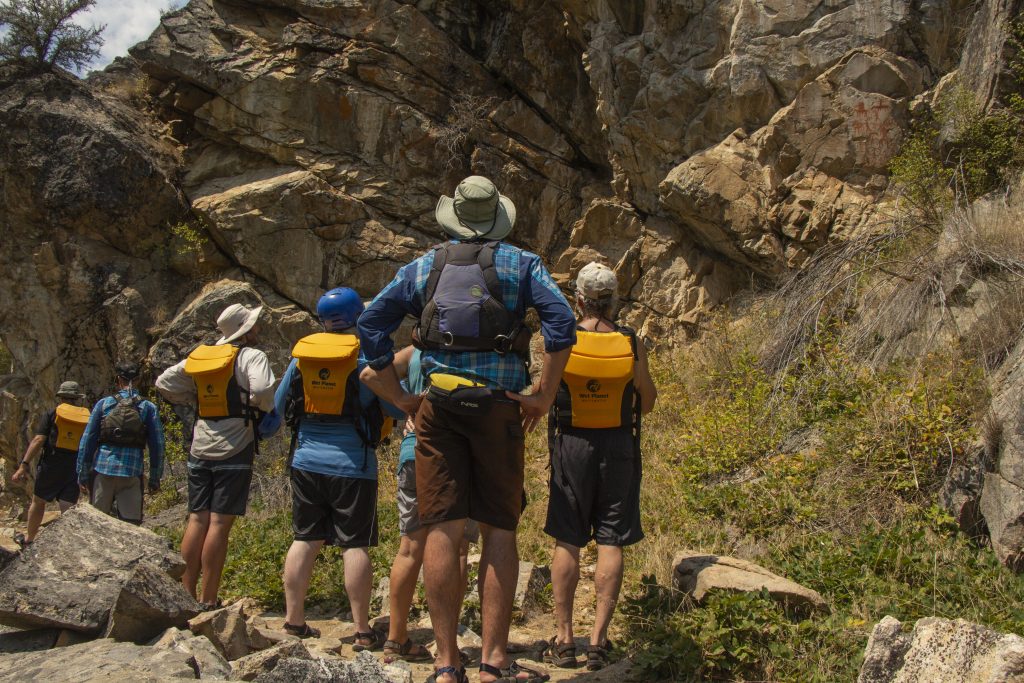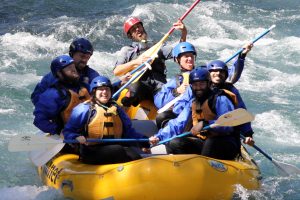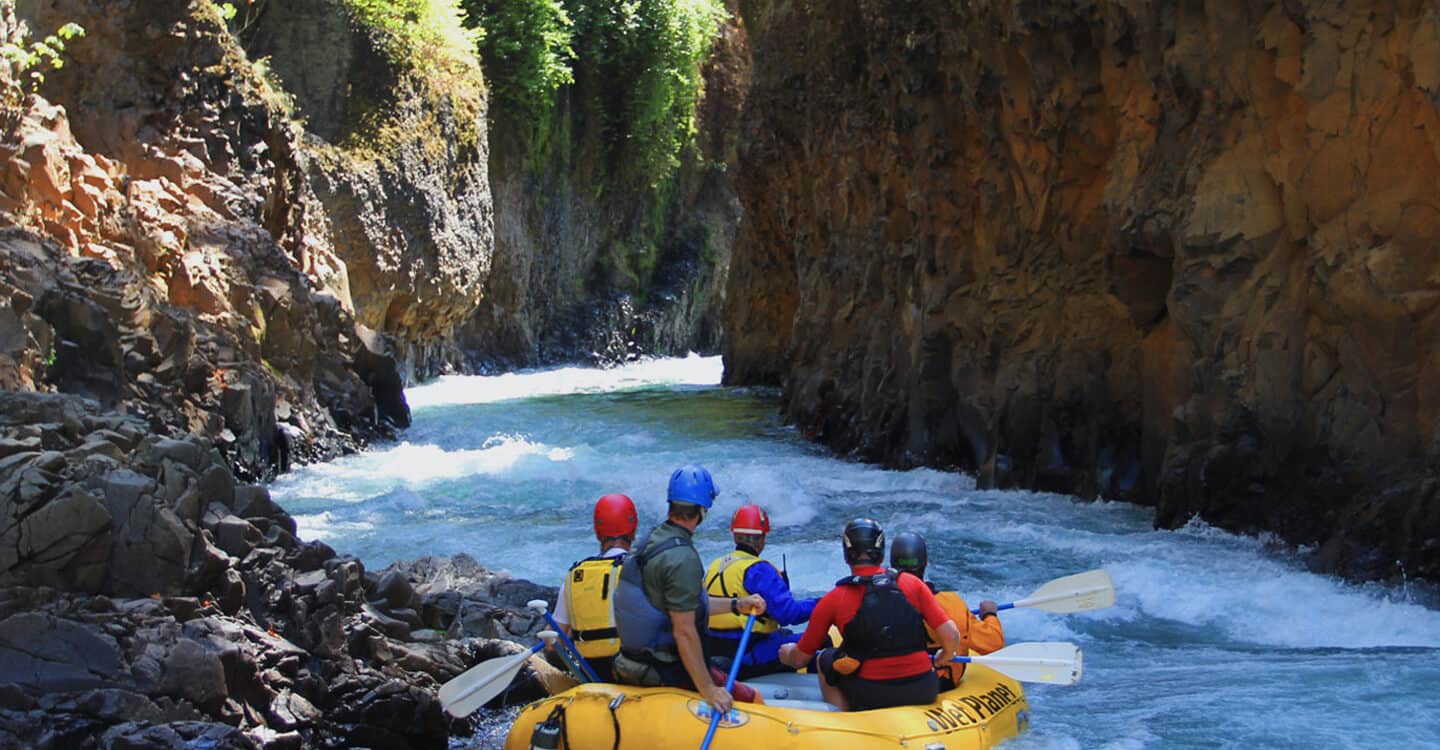As you float and wander through the gorges of Idaho’s Main Salmon River, you may come across pictographs adorning the rock walls along the riverbank. Like many who have passed before you, the meaning of these drawings may be a mystery to you. But for some, like the Shoshone or the Nez Perce people whose ancestors once inhabited the river gorge and its surrounding mountains, these drawings are of great importance. They remind of the many ways in which humans were a part of the natural life cycles. And at one time, these emblazoned walls were portals to the spirit world, where visions gave shamans cures to illnesses, forecasts of the hunting season, and insight for leading their people.
This is Steps and Strokes: Tales of the extraordinary visitors and inhabitants of Idaho’s Salmon River gorge and the Frank Church Wilderness of No Return.
Sacagawea & The Northern Shoshone
Whether or not you understand the drawings on the walls, simply laying eyes on the handiwork of native hands, now long gone will surely add enchantment to your journey through the remote Salmon River canyon.
The morning sun shines and glitters on the last patches of snow. The man looks down from the ridge, through the trees, to where the light shimmers on the fast current of the Agaimpaa – the big fish water. He begins to descend the slope, following the trail made by the bighorn sheep, cutting back and forth across a swollen creek. Though wrinkled and withered, the man dances lightly from boulder to mossy patch on his way downhill.
Hanging off his shoulder is an elk-hide satchel containing rust-colored powder and a stone bowl. It is all he will need once he arrives at the Poha Kahni.
Coming to a rocky pool, he stops and kneels on a flat, mossy stone. Looking into the glassy water, he sees his face and in it, the face of his people: Tuka-Deka. Quietly murmuring, he pulls the bowl from his bag before peeling off his clothing. Holding the bowl reverently in two hands, he scoops water from his reflection and pours it slowly over his shoulders. Icy rivers spill down his back and chest as he fills the bowl again. This time the water cascades down his forehead. Breathing deeply, his nostrils flare wide, creating tiny waterfalls that crest over his lips and drip to his knees.
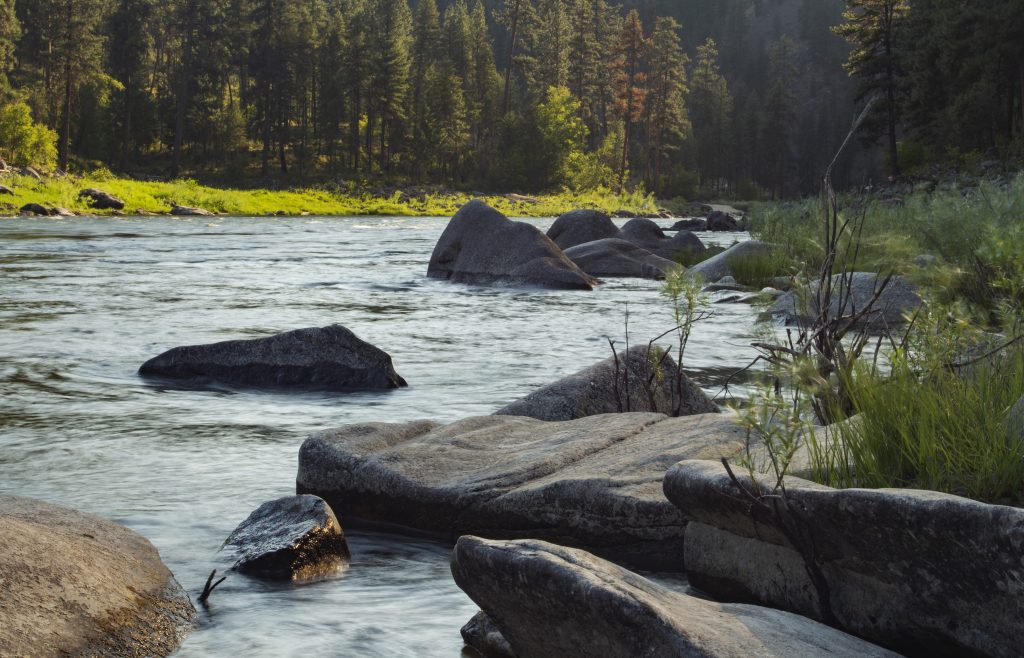
Laying the bowl on the moss, the man redresses and stands up. He walks lightly around edge of the pool and away along a rock shelf to kneel in the dirt under an overhang. In front of him, reddish figures dance, hunt, forage, fly, and die on the smooth surface of the rock wall. His eyes focus on the wall directly in front of him and he begins to chant. His stomach, already two days empty, joins in the chant. Slowly, the sound of the great river fades, as does the little sun that peaks under the overhanging rock. The man’s body feels weightless until it is almost as if it is not there at all. The entire world disappears as the figures in front of him spring to life. He has entered Poha Kahni, the house of power.
The next morning, the man’s eyelids open as slowly as the sun rises. His body feels weak. But his mind is pulsing with life. He knows now where his people must hunt this season, and what illnesses may befall them and how to heal the afflicted. His visions have told him that the rains will come early this year. Also, he has seen a reunion of a brother and his sister, thought lost forever. But strange men surround them; men whose skin is pale like the flowers of the dogwood tree. She has led them here. And behind them, millions more march towards the setting sun, its last rays glinting off the metal of their guns.
The man rises with a grunt and makes his way back to the pool. Again, he peers into its waters, inspecting his reflection, before dipping the bowl and pouring it directly onto the top of his head. Filling it again, he walks steadily back to the adorned wall. He shakes the chalky contents of his satchel into the wet bowl and mixes the powder to a paste. Coating his hand in the pigment, he begins to recreate his visions alongside those of his forefathers. He depicts the large animals walking into the mountains and humans following behind. He paints a fallen beast and he paints a fallen man beside it. He paints a child rising from the ground where the dead figures lie.
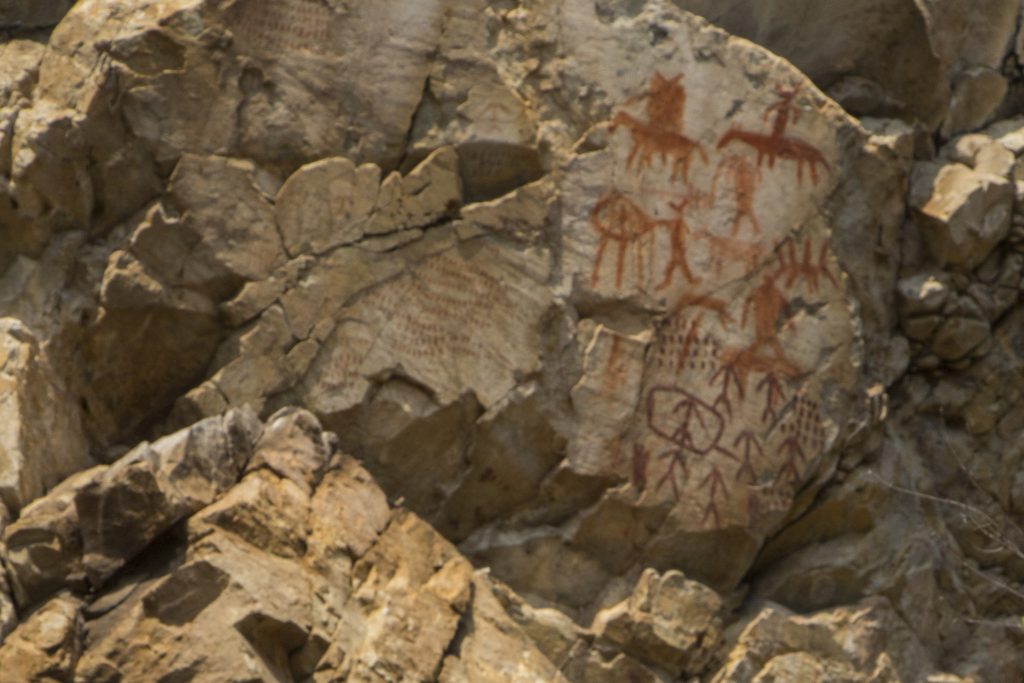
Returning to the village that evening, he is informed that Sacagawea, the sister of Chief Cameahwait has returned from the east where the warring Hidatsa had taken her as a slave, years ago. There, a French trapper called Charbonneau purchased her. Together, they were hired by other whites to lead them across the continent in search of the great ocean to the west. Cameahwait has gone with Sacagawea to the white men’s camp to lead them around Agaimpaa.
And so it began.
The pictographs along the Main and Middle Fork of the Salmon River are attributed to the Bitterroot Culture. For eight thousand years, these people lived and spread forth from what is now the Great Basin Desert, spanning Nevada, Utah, California, and Idaho. Seven thousand years ago the region underwent a climactic shift, becoming the arid landscape it is today. As the temperatures rose, many groups followed the big game animals into the mountains where they foraged for seeds, berries, and roots; and fished the great rivers spilling forth from the mountains of the Continental Divide.
Among the many groups that formed out of this Great Basin Diaspora was the Northern Shoshone, who referred to themselves as Tuka-Deka. They were hunter-gatherers, ranging along the Salmon River and extending far into Bitterroot and Sawtooth Mountains. They and their ancestors painted their stories and beliefs on the walls of the Salmon River canyons and etched their legacy on the walls of history:
It was the Northern Shoshone who warned Lewis and Clark against attempting to navigate the Salmon River. It was they that led the Corps of Discovery up and around the raging waters of the Salmon River. And it was the most famous Shoshone of them all that led, translated, and in many ways, ensured the safe passage and completion of the expedition: Sacagawea.
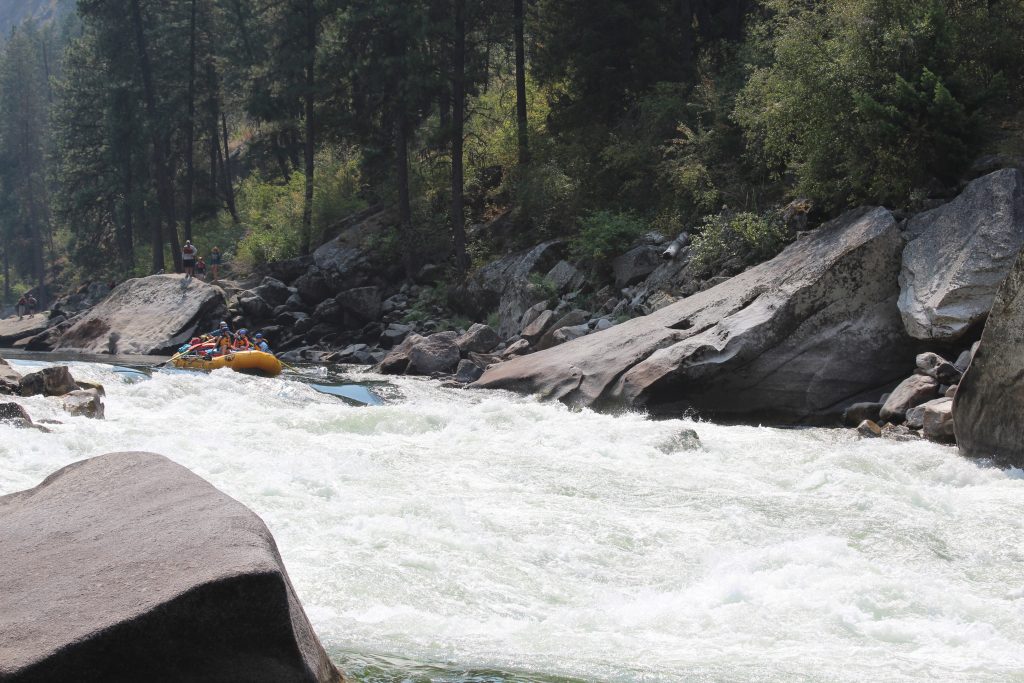
Wet Planet Guide John Approaching Black Creek Rapid
Sacagawea was captured in a raid by the Hidatsa as a young girl and brought to Hidatsa-Mandan villages in North Dakota. There, she was bought and impregnated by the French trapper Charbonneau, who thought of her as his wife. In 1804, Captain William Clark hired her and Charbonneau as translators: Sacagawea spoke Shoshone and Hidatsa, Charbonneau spoke Hidatsa and French; expedition member Francoise Labiche spoke French and English. When the time came to procure horses and help from the Shoshone, Clark knew this chain of translation would prove invaluable.
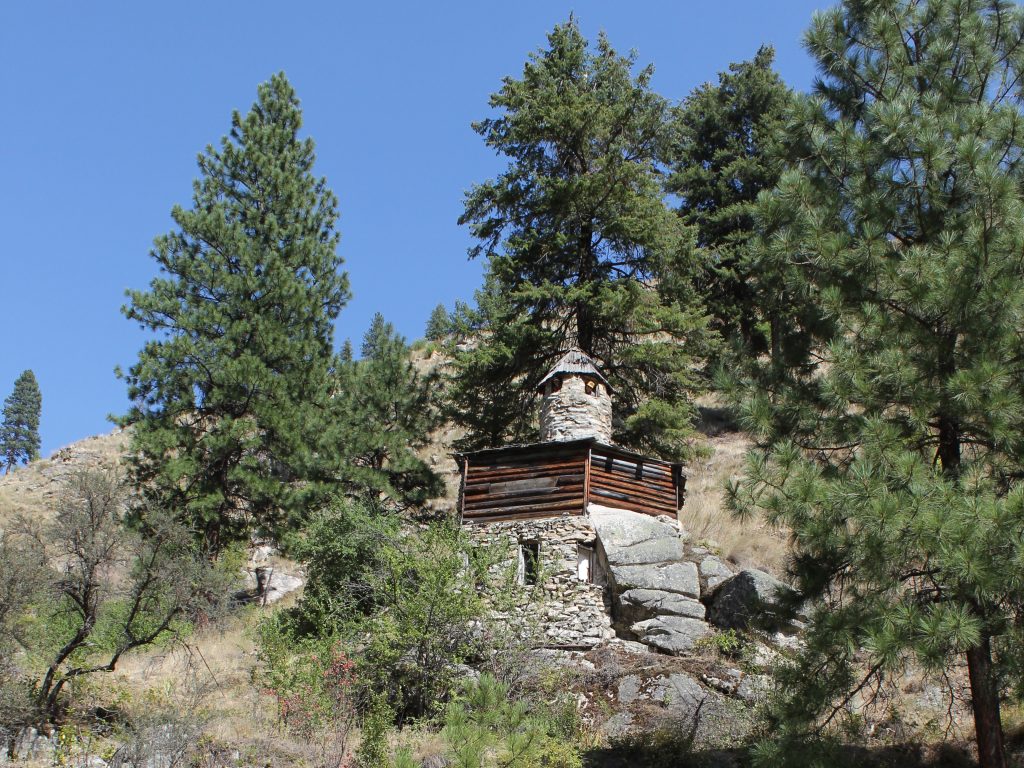
On the trail, Sacagawea gave birth to Jean Baptiste Charbonneau. The presence of a woman with a newborn on her back helped to ensure peaceful reception by the many native groups who may have otherwise perceived the group as a war party. At the expedition’s end, Charbonneau received $500 and 320 acres of land. Sacagawea received nothing.
And for their invaluable assistance and support, Cameahwait’s Shoshone were promised a leading role in the trade relations to come with westward expansion. Of course, these expectations were never fulfilled. Over the years, the Northern Shoshone remained peaceful and helpful when possible to the expanding settlers. But as other groups moved to resist the incoming hordes, the Shoshone were pulled into the fray. When Bannock fighters were invited to find refuge among them in 1878, they drew the attention of the U.S. Army and local vigilante groups. The Shoshone and their Bannock absconders were hunted out and sent to Fort Hall Reservation in Idaho.
To learn more or to explore the majestic Main Salmon River for yourself, click here.
_____________________________________________________________________________________________________________________________________
As you enter the Frank Church River of No Return Wilderness for a Main Salmon River rafting trip, you enter a landscape that has changed very little since Lewis and Clark struggled through on their way to the Pacific. The water still runs “with great violence” through steep rock walls, but expert guides now steer boats gracefully between the menacing boulders of Big Mallard Rapid, dancing through and over the standing waves of Black Creek Falls, bringing you and your crew of explorers to rest on sandy banks. Here, we feast on Dutch oven lasagna and fresh fruit desserts before dropping off to sleep under starry, Idaho skies. We wake in the morning to the smell of hot coffee and pine sap, thankful that the wilderness surrounding us remains so inaccessible and the waters so fierce that to this day, one of the only ways to appreciate them is with an explorer’s spirit and a Wet Planet guide at the oars.
Author Jake Hochberger is a talented story-teller, raft guide, and kayaker with an affinity for garlic.

